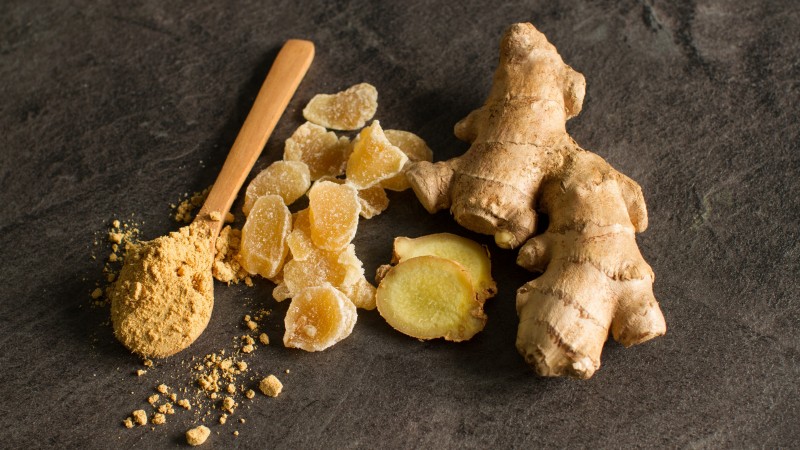Ginger: demand is constantly increasing
July 17, 2024 at 4:47 PM ,
Der AUDITOR

More growers in Brazil
As the experts at FreshPlaza report, the initially high demand for ginger from Peru has now declined. The reason for this is the higher temperatures in the important consumer markets of Europe and the USA, which are dampening buying interest and thus also pushing prices down. However, growers and exporters in Peru point out that the harvest took place early this season and that a lot of goods were shipped at the beginning of the season, which could lead to bottlenecks later in the season. Although one exporter told FreshPlaza that they are currently only working at 50% capacity, stocks are nevertheless steadily decreasing and most exporters are likely to face supply problems at the end of the season.
In Brazil, supply has increased significantly in recent years as many farmers have switched to growing ginger. Demand for the healthy plant has risen sharply, especially since the coronavirus pandemic. However, buyers in the USA are still finding it difficult to adapt to the many new suppliers, according to FreshPlaza. Due to the huge rush to the market, some Brazilian farmers harvested unripe ginger at the beginning of the season, which has led to some problems. Overall, however, experts believe that the supply should still be more than sufficient, at least until the end of September.
US buyers are increasingly sourcing goods from Brazil this year due to the more favourable prices. However, Peru is supplying even larger quantities, especially organic ginger; the regulations in the USA are less strict than in the EU. China is also an important supplier for US importers. According to FreshPlaza, demand is currently stable and in balance with supply. In view of the high and stable supply from Peru, China and Brazil, a stable price trend can also be expected.
China's exporters struggle with high freight costs
In China, ginger exports are currently in their hot phase. Demand from overseas remains strong, but exporters are struggling with the horrendous freight costs. The attacks by the Houthi rebels in the Red Sea are continuing and most shipping companies are avoiding shipping through the Suez Canal, which is extending delivery times and increasing freight prices to currently around USD 9,000-11,000 per container. The congestion in the harbours further exacerbates the problem. Prices on the Chinese domestic market are currently at CNY 8.4-8.8/kg and usually remain at a fairly stable level throughout the summer. Imports from Brazil and Peru influence the market to a certain extent, but more important are the weather conditions in the Chinese growing regions, which can lead to damage to the plants in the fields and warehouses if conditions are too wet or too dry. Domestic demand in China is likely to increase in September in the wake of some important public holidays, particularly in the gastronomy sector, and prices could then rise again slightly.
Subdued trade in South Africa
Market players in South Africa are currently complaining about weak purchasing power. The harvest is currently underway in the Limpopo and Mpumalanga growing regions, but one producer reports a 30% drop in demand from retailers. Cold temperatures and heavy rainfall are also dampening trade. In addition, high imports from China and Vietnam are putting pressure on the local market. Experts report prices of EUR 4.00-4.30/kg for class 1 ginger and EUR 3.06-3.60/kg for a mixture of classes 1 and 2. As the harvest has not yet been completed, class 3 ginger is still in short supply.
EU imports down
The European market presents a mixed picture. In contrast to many other markets, ginger imports here actually fell in 2023 compared to the previous year. Many of the most important suppliers suffered losses, including Nigeria (-27.7%), China (-26%), India (-14.3%) and Vietnam (-32.4%). In contrast, Côte d'Ivoire and Indonesia managed to significantly increase their shipments to the EU. EU imports totalled 7,053 mt in 2023, compared to 9,107 mt in 2022.
|
EU ginger imports, in mt |
|||
|
Supplier |
2022 |
2023 |
Diff. |
|
Nigeria |
3,281 |
2,372 |
-27.7% |
|
China |
2,867 |
2,122 |
-26.0% |
|
India |
733 |
628 |
-14.3% |
|
Vietnam |
686 |
464 |
-32.4% |
|
Côte d’Ivoire |
168 |
256 |
52.4% |
|
Nepal |
247 |
208 |
-15.8% |
|
Peru |
307 |
188 |
-38.8% |
|
UK |
168 |
143 |
-14.9% |
|
Indonesia |
57 |
141 |
147.4% |
|
Burkina Faso |
84 |
100 |
19.0% |
|
Others |
509 |
431 |
-15.3% |
|
Total |
9,107 |
7,053 |
-22.6% |
|
European Commission / DG Trade 09101200 Ginger, crushed or ground |
|||
France and Italy prioritise high quality
In Italy, organic ginger is currently in particularly high demand. According to FreshPlaza, retailers place less emphasis on large quantities than on a continuous supply. Ginger is imported from China and South America in particular, although it must be certified organic according to European standards. This makes this high-quality product around a third more expensive than conventional ginger, which currently trades at between EUR 3.50 and EUR 4.00/kg. So far, however, this does not seem to deter consumers.
In France, importers mainly source ginger from Brazil, which is usually delivered by air freight in order to maintain quality. Exports are not very high, but both consumption and prices have remained fairly stable since the beginning of the year. Slightly higher prices from suppliers have not yet had an impact on consumer prices.
Germany significantly increases imports
In the Netherlands, as in many other destinations, ginger consumption declines in the summer. Imports from China are continuing, but traders are currently facing the problem that the market price cannot cover their purchasing costs. There are also some problems with the maximum residue level being too high, and transport costs are of course also having an impact here. Transport prices from South America are more favourable, so that some buyers prefer the goods from there.
German ginger imports have almost quadrupled within ten years. In 2021, almost 31,600 mt of ginger worth EUR 74.6 million were imported into the country, which is 31% more than in the previous year, according to the Federal Statistical Office. In 2012, the figure was 8,200 mt worth EUR 14.4 million. The most important country of origin for German imports is China, which secured a market share of 52% in 2021, followed by Peru with a market share of 21%.
View more
- price charts





